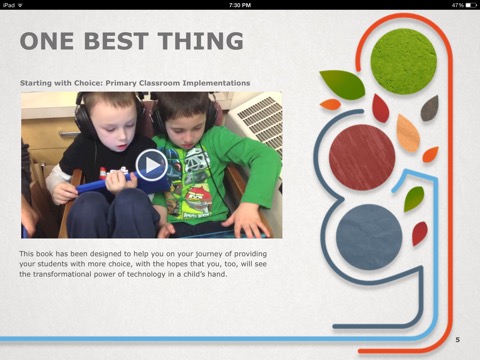
I got the book: Starting with Choice: Primary Classroom Implementations by Karen Lirenman. She is a first grade teacher in Canada who believes that power of choice “empower, engages, and inspires” children.
In her book she also gives several videos to help demonstrate her point. She says that with younger learners that this increases “engagement, problem-solving, ownership of learning, authenticity, collaboration,, cooperation, peer assessment, and pride with accomplishment” to quote her directly.
I think that this could be for students of all ages and not just for younger children. All students want to be given choices about everything that is happening, very few of us just want to be told what to do all the time. We as educators have to realize that this is the same of our students.
Lirenman lists three requires for providing choices in the classroom:
1. a positive mind-set
2. being comfortable relinquishing control
3. identifying learning goals and supporting choices that embrace these goals.

Some of these things I believe come with experiences, in fact most of this goals will all get easier the longer we teach. I do think you have to go into your classroom with a positive mind-set though. Teachers will get more comfortable and be able to identify specific goals easier as time goes on.
The more choices we give our students, the better off they’ll be in the long run. This will help them not only in one area of school, but in almost all. The power of choice can also go beyond school and help to teach them skills they will need in the ‘real world’.
A couple other of books that I found interesting were: If Shakespeare Could Tweet and Photography Inspired Writing. I know that I am passionate about History/Social Studies. But I will always have a love for English and getting ideas and inspiration from other areas is not a bad thing.












